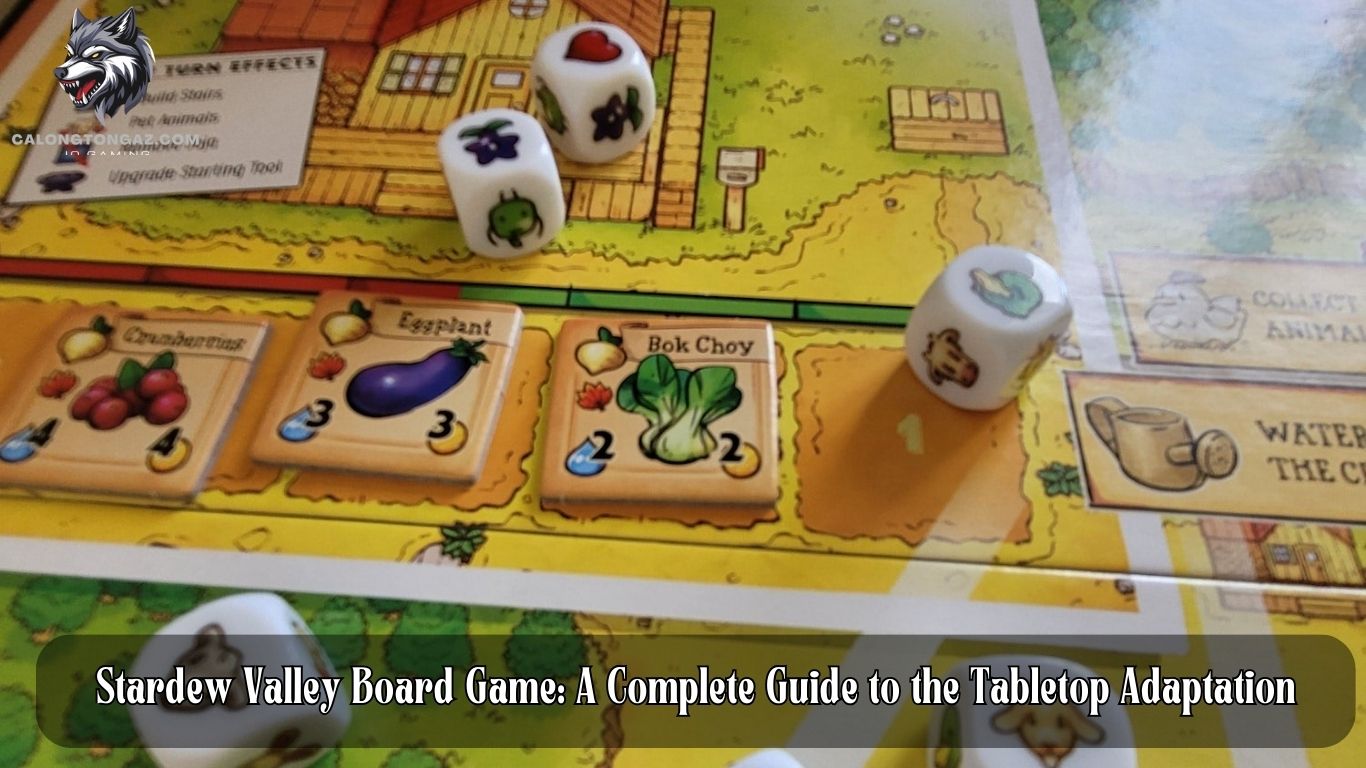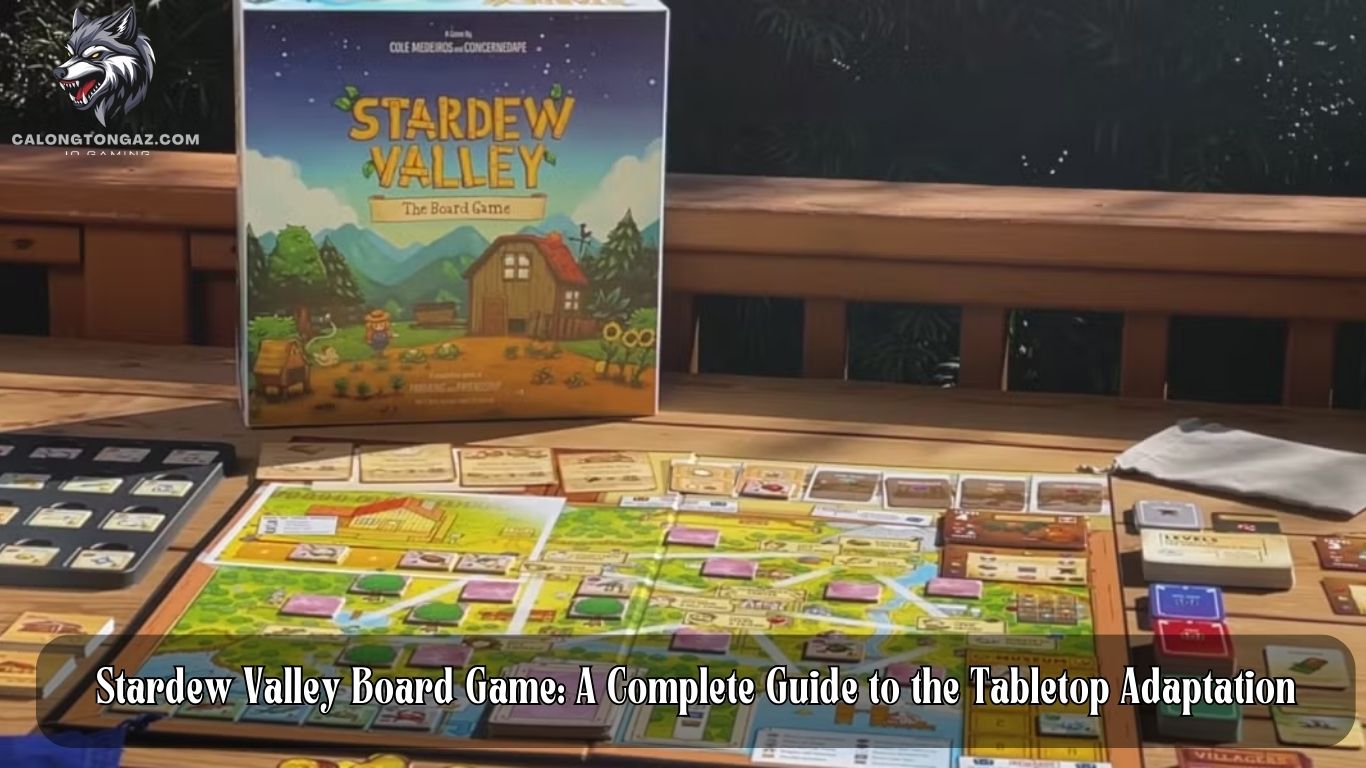The Stardew Valley Board Game has captured the hearts of fans worldwide, offering an immersive tabletop experience inspired by the beloved farming simulator. Whether you’re a long-time fan of the video game or new to the Stardew Valley universe, this board game delivers a cooperative adventure that stays true to the original’s charm. Learn everything you need to know about this engaging game here, brought to you by Ca Long Tong AZ.
What is the Stardew Valley Board Game?
Origins of the Board Game
The Stardew Valley Board Game is a collaborative tabletop adaptation of the popular indie farming simulation game created by Eric Barone (ConcernedApe). Released in 2021, the board game was designed to emulate the enchanting and cooperative nature of the video game, allowing players to work together to restore the Community Center and protect the valley from the ever-looming Joja Corporation.
Key Features
- Players: Supports 1 to 4 players, making it ideal for solo sessions or group play.
- Game Duration: Average playtime is between 1.5 to 2 hours.
- Objective: Complete Grandpa’s Goals and restore the Community Center by collecting resources, making friends, and defeating monsters.

Why Choose the Stardew Valley Board Game?
Faithful to the Video Game
Fans of the original Stardew Valley will appreciate the board game’s faithful recreation of its core mechanics, including farming, fishing, mining, and befriending villagers.
Cooperative Gameplay
Unlike competitive board games, the Stardew Valley Board Game emphasizes teamwork. Players must strategize together to meet their objectives, making it an excellent choice for family game nights or casual gatherings.
How to Play the Stardew Valley Board Game
Setup
Before starting, each player selects a character and sets up the board, which includes spaces for crops, buildings, and the Community Center. You’ll also shuffle decks for event cards, profession upgrades, and villager interactions.
Gameplay Mechanics
Farming
Players can plant seeds, water crops, and harvest them to earn income or resources.
Mining
Venture into the mine to collect valuable ores and fight monsters, just like in the video game.
Befriending Villagers
Gifting items to villagers allows you to gain hearts, which are crucial for completing Community Center bundles.
Random Events
Event cards add unpredictability, from weather changes to unique opportunities, keeping gameplay dynamic.
Winning the Game
To win, players must complete a set number of Grandpa’s Goals and Community Center bundles before the end of the game.
Advanced Tips for Mastering the Game
Strategic Planning
Divide responsibilities among players. For instance, one player can focus on farming while another specializes in mining or fishing.
Prioritize Resources
Certain bundles in the Community Center are more challenging to complete than others. Identify these early and plan accordingly.
Balance Risk and Reward
While venturing into the mine can yield high rewards, it also carries risks. Ensure you’re well-prepared with tools and items before exploring.
The Stardew Valley Board Game Community
Online Resources
Many fans have created guides and walkthroughs to help players navigate the game. Platforms like BoardGameGeek and Reddit offer valuable tips and strategies.
Expanding Your Experience
Although there’s no official expansion yet, fans often create their own modifications to enhance gameplay, from new event cards to additional objectives.

Where to Buy the Stardew Valley Board Game
The game is available through official channels like ConcernedApe’s website and select retailers. Due to its popularity, it often sells out quickly, so act fast when restocks are announced.
A Community-Oriented Experience
The Stardew Valley Board Game is designed for cooperative gameplay, reflecting the collaborative spirit of the original video game. Players work together to accomplish the goals set by Grandpa’s letter, which often requires farming, raising animals, and contributing to the community center. This collaborative approach encourages teamwork, making it an excellent choice for family game nights or friends looking for a strategic yet fun activity.
Adaptation of Gameplay Elements
The board game successfully translates the core mechanics of the video game into tabletop format:
- Seasons and Time Management: The game introduces a structured progression of seasons, each bringing its own challenges and opportunities, much like in the video game.
- Resource Management: Players must balance their resources wisely, deciding when to plant crops, fish, or forage, mirroring the strategic decisions in the digital version.
- Random Events: Events such as weather changes and NPC interactions are recreated through event cards, ensuring each game session feels dynamic and unpredictable.
Depth of Strategy
While the game remains accessible to new players, it incorporates enough strategic depth to keep seasoned board gamers engaged. Decisions about upgrading tools, managing finances, and collaborating on shared goals require careful planning.
Collector’s Appeal
The Stardew Valley Board Game has become a collector’s item due to its charming artwork and faithful representation of the beloved video game universe. The attention to detail, from the game pieces to the board design, appeals to fans who appreciate high-quality, thematic board games.
Expanding Popularity of Video Game Adaptations
The success of the Stardew Valley Board Game highlights a growing trend of adapting popular video games into board games. Titles like The Witcher Adventure Game and Horizon Zero Dawn have also entered the market, but Stardew Valley sets itself apart with its family-friendly nature and wholesome themes.
If you’d like, I can include these aspects into the main text or expand further on any point! Let me know how I can refine the content for your goals.













